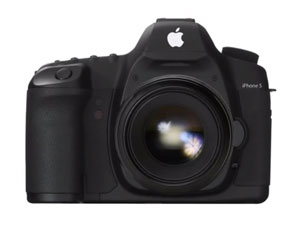Only a year ago digital full-frame was hardly affordable for many photographers. With lower production costs for 35mm equivalent sensors and camera makers jumping on the full-frame bandwagon a large sensor camera can be yours for less than $2k. The Sony A7 and A7R, Canon 6D, Nikon D610 or the nostalgic Df, it’s no rocket science to expect more full-frame cameras and possibly camera makers to enter the fray. This in a day and age when imaging devices with smaller sensors, above all the iPhone 5S or Nokia Lumia 1020, deliver amazing image quality while offering all the functionalities imaginable. Even National Geographic praises the iPhone 5S’ camera. Why then… full-frame?
As dumb as the comparison may seem, for the sake of convenience more and more photographers trade best possible quality for still good quality and leave the big gear either at home or sell it altogether.

This iPhone 5S (…) in many ways I prefer it to my DSLR. Sure it has its pros and cons… but for the first time ever, I didn’t bring my Canon 1DX and I didn’t regret it one bit. That’s saying a lot.
The quiet beauty behind the iPhone 5S is what I find most powerful. The upgrades they made here aren’t ones that sell phones… instead, they focused on making the pictures better, even if it’s silent innovations in features no one even knows about… It’s not maximum megapixels or other flashy specs. The results are amazing and at the end of the day, people are going to really like the pictures coming from their iPhone 5S… and that’s really all that matters!
Do you need full-frame? That’s a question only you can answer. You certainly don’t need one to create beautiful images. See full-frame as a welcome diversification of the market. Camera makers need new offerings with products smartphones can’t match.
Here’s why bigger (sensors) might still be better:
- ISO, ISO, ISO… never worry about working in low light
- Better video capabilities
- More and narrower depth of field leverage (all some clients want is bokeh…)
- It seems obvious, but larger formats really do see more and smoother colors than smaller formats: fatter pixels catch more light.
- Traditional full-frame DSLRs offer tracking advantage.
- Still not cheap, but with the price of today’s full-frame cameras there is no reason not to use one.
Here’s why smaller might still be better for you:
- Compact full-frame lens options are still limited.
- If you’re not willing to spend money on the best possible glass = stay on crop.
- Macro and architectural photography love smaller sensors.
- The smaller a sensor = size and weight advantage
- Less stopping down to get sharp focus
- You like zooms? The crop factor gives a very real increase in magnification, at the cost of pixels per mm of sensor as well as narrower field of view.
- You don’t have to be as close for the same framing.
- If you don’t make a living in photography, who cares. The only way to see any of these pixel differences is when you’ve already got a flawless shot, and then only when printed really big and you’re looking too closely.


